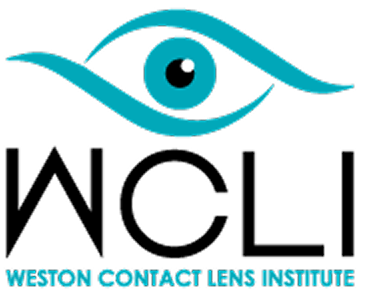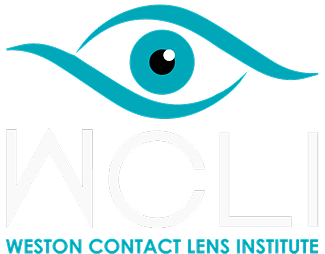Keratoconus is a serious eye condition that changes the shape and strength of the cornea. The condition leads to visual distortions and challenges with traditional vision correction methods. For patients living with keratoconus, the long-term prognosis can be concerning. However, with advances in medical technology, we can improve your outlook and support you as your condition develops over time.
What Is Keratoconus?
Keratoconus is a progressive condition that affects the cornea; the clear dome at the front of the eye, the iris and pupil. Over time, keratoconus causes the round cornea to thin and bulge outward into a cone shape. Patients are usually diagnosed with keratoconus in their late teens or early twenties, with some being affected earlier or later in life.
Keratoconus progression can occur rapidly in adolescence, but it eventually slows with age. The speed at which keratoconus progresses can vary widely. Some patients experience a gradual worsening of symptoms, while others can experience sudden and severe changes to their vision. As the condition progresses, the cornea continues to thin and bulge, leading to myopia and astigmatism that gradually increase.
Keratoconus doesn’t cause any pain, but the visual impairments it triggers can impact daily life. Common symptoms include sensitivity to light, frequent prescription changes, blurry vision, irritations, and visual distortions. Untreated keratoconus can eventually lead to permanent vision loss. So, to improve your potential prognosis, it’s critical to explore treatment options with your optometrist.
Can Early Diagnosis Improve Long-Term Outcomes for Keratoconus Patients?
Early detection is key in improving the long-term prospects of keratoconus patients. Promt diagnosis allows us to implement intervention protocols that can slow or halt the progression of the condition. Eye care professionals utilize advanced diagnostic tools to determine whether patients have keratoconus and how far it has progressed.
At Weston Contact Lens Institute, we use corneal topography to accurately examine. Regular follow-up exams are important so we can use the same imaging tools to carefully monitor the condition of your eyes. Consistent monitoring allows eyecare practitioners to track changes in vision and corneal shape, so treatments can be adjusted as needed.
What Treatments Are Available for Keratoconus?
Keratoconus treatment improves outcomes and reduces the long-term impact of the disease. Due to advances in keratoconus detection and treatment, the outlook today is far more optimistic than it used to be. Treatments now focus on improving vision and halting progression, which considerably enhances overall quality of life.
Corneal cross-linking (CXL) is one of the most important medical breakthroughs for people living with keratoconus. CXL is a minimally invasive procedure that strengthens the cornea by creating bonds between corneal collagen fibers, stabilizing the cornea and reducing the need for corneal transplants later in life.
We offer specialized vision correction using scleral contact lenses. Scleral lenses are made of a rigid, gas-permeable polymer, and they have a larger diameter than traditional soft contact lenses. What makes scleral lenses truly unique is how they vault over the delicate cornea to rest on the sclera, which is far less sensitive. This vault creates a reservoir beneath the lens that is filled with saline.
As we know, keratoconus causes the cornea to become distorted, making traditional contact lenses uncomfortable and often inadequate for vision correction. The vaulted design of scleral lenses provides additional space for corneas that bulge outward, enhancing comfort. The surface of the lens creates a substitute corneal surface that is smooth and unform and the saline reservoir hydrates the ocular surface and helps neutralize irregular astigmatism to provide clear vision.
How Can Patients With Keratoconus Improve Their Quality of Life?
Living with keratoconus requires a proactive approach to eye health. Patients must understand that their condition can change over time, and their treatment needs may evolve. Our goal is to preserve as much vision as possible. We will work with you to manage your comfort and vision in a way that helps you function as effortlessly as possible.
There are small daily habits that can improve your quality of life and minimize your discomfort. Avoiding eye rubbing, protecting your eyes from UV light, and managing allergies can reduce irritation and stress on the cornea. Using lubricating eye drops can also provide relief from dry eye, which often accompanies keratoconus.
Some patients face psychological challenges as a result of coping with a chronic eye condition. Vision loss and ocular discomfort can be distressing, so we recommend that our patients seek help through counseling, support groups, and education programs. Adhering to your treatment protocols is fundamental. It is important to prioritize your mental health so you can stay engaged and consistent with your treatment.
Live Life to The Fullest
There is no known cure for keratoconus, but early diagnosis, regular monitoring, and advanced treatments have significantly improved the long-term outlook for keratoconus patients. While it is a progressive condition, many of our patients enjoy functional vision and a good quality of life with the appropriate treatment and hands-on care. If you believe you may have keratoconus or you have already been diagnosed, contact the Weston Contact Lens Institute. Our eyecare professionals will guide you through each step of maximizing your comfort.

.jpg)




